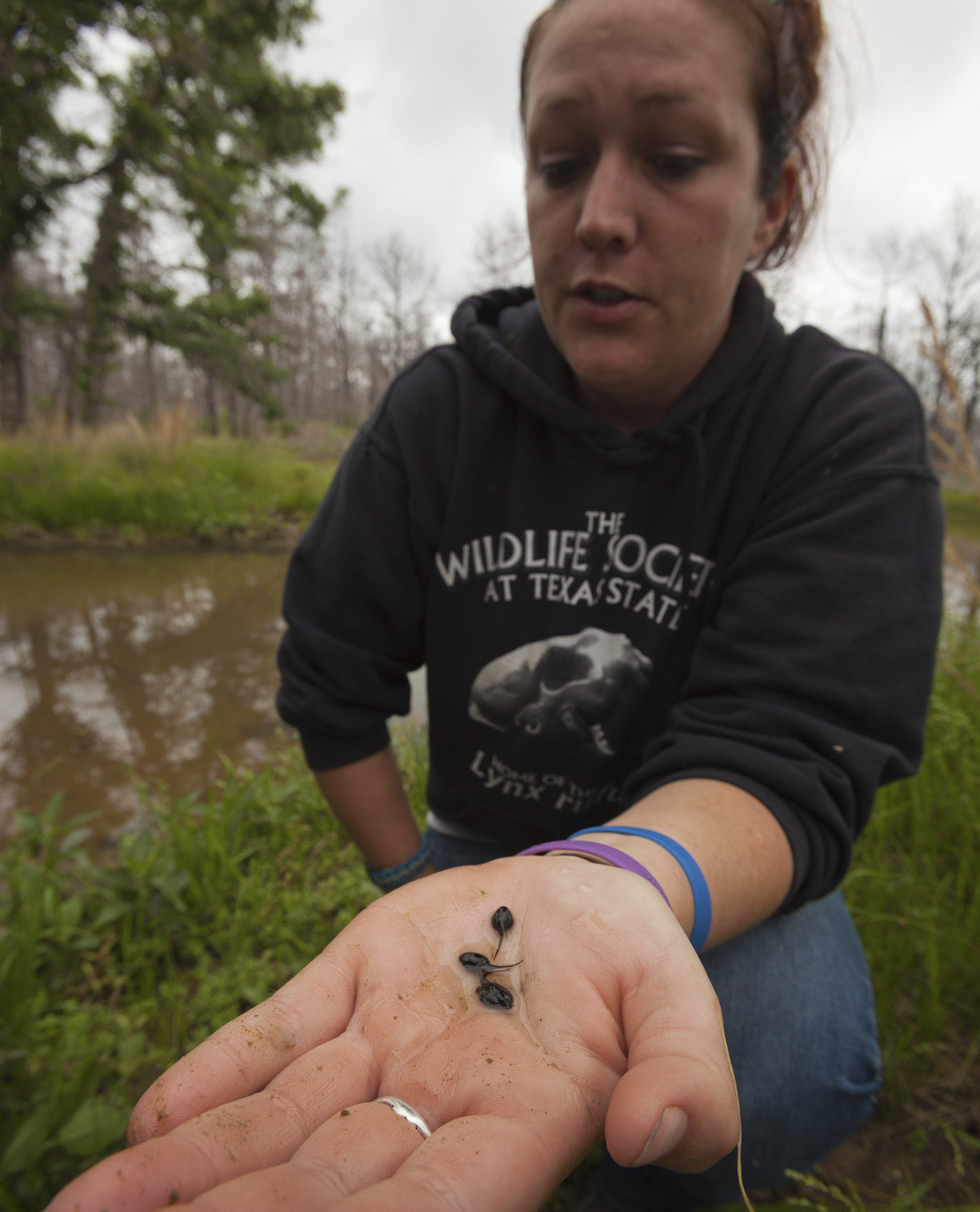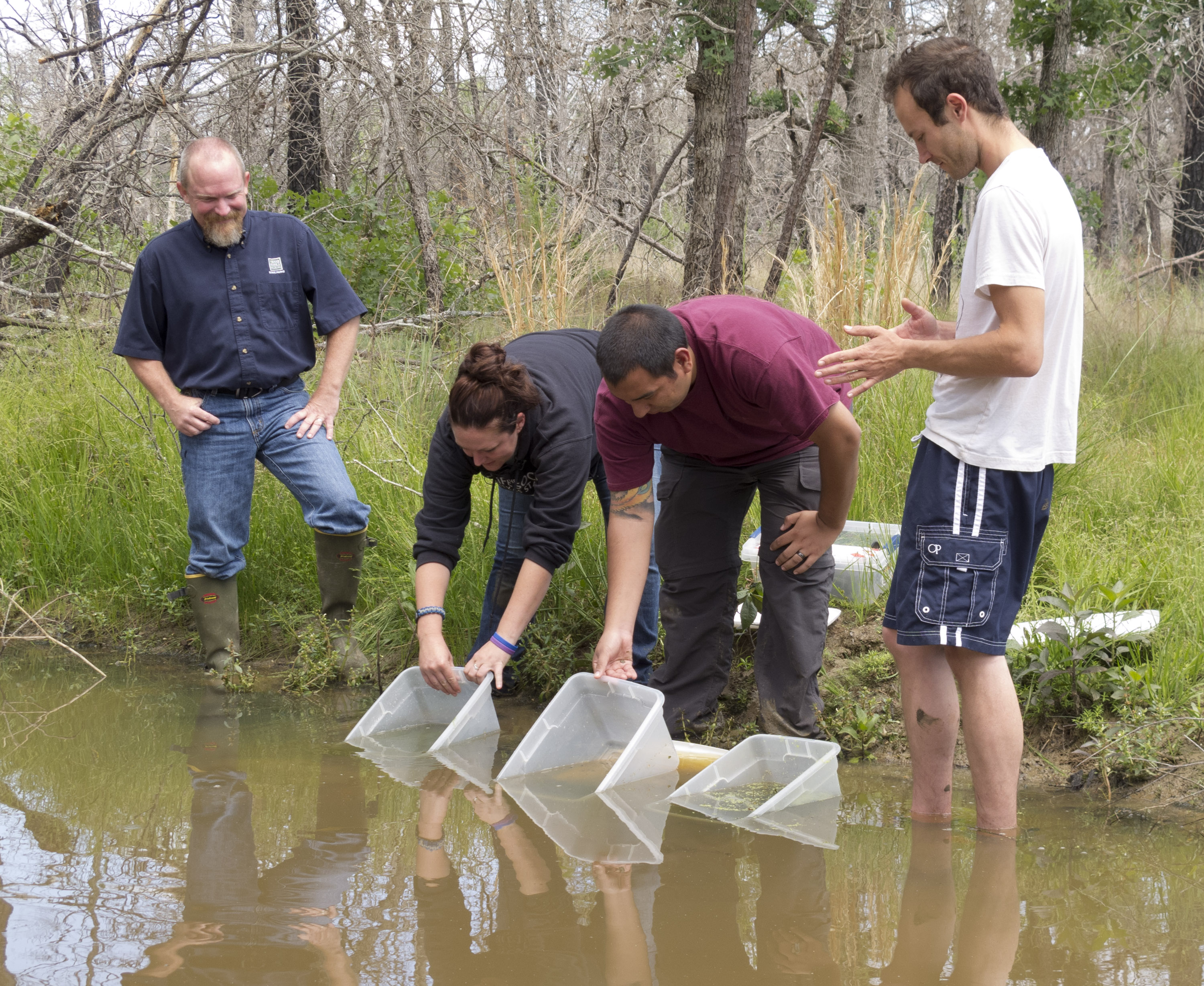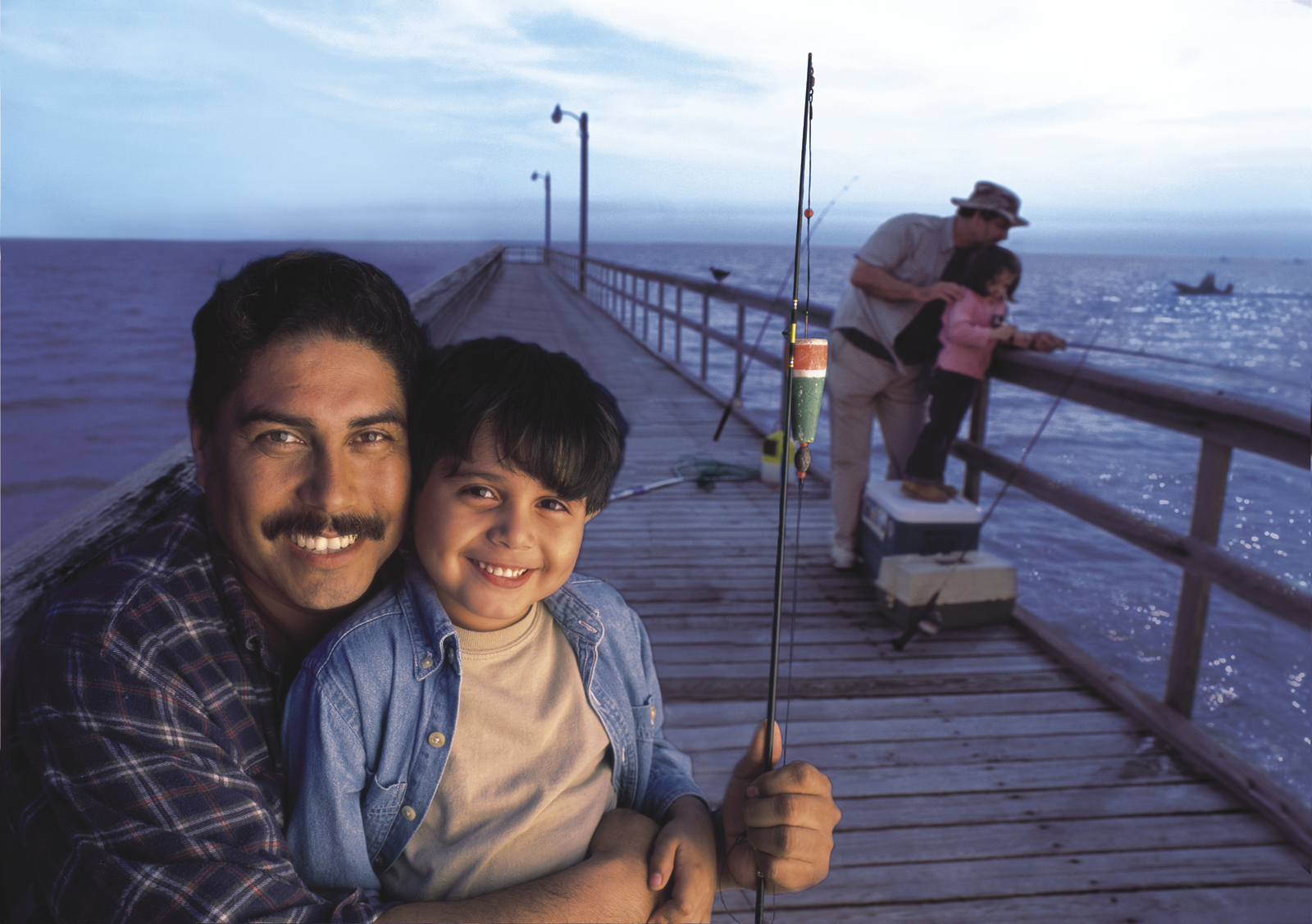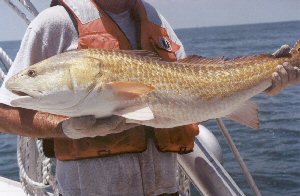June 6th, 2013

Houston Toad Tadpoles, Image by Earl Nottingham, © Texas Parks and Wildlife Department
This is Passport to Texas
Recent drought and wildfires could have spelled the end for the endangered Houston Toad, which exists in and around Bastrop State Park.
05—A few months after the wildfire in Bastrop County, our surveys documented very few toads during that first breeding season.
This had wildlife biologists like Greg Creacy worried about the status of the remaining population. But a recent survey found more breeding toads than they had a right to expect after such devastation.
11— It’s puzzling, and we’re continuing to do research with collaborators like Texas State University. And we’re learning more about the species with every passing year, and we hope to have answers to those questions soon.
Using a “head start” program Creacy harvested egg strands from breeding areas – post fire – raised them to tadpole stage, then released them where they were found. While it gives them a higher survival rate…
27—We have noticed that the toads that we have found since the wildfire, typically do not weigh as much as they usually do. The eggs that they’re laying are smaller. So it appears that physiologically they’re not as in good health as they normally are. But you have hope that over time this will change? Yes. They’ve gone through a very difficult time with the drought and the subsequent wildfire, but we are optimistic things will be improving soon.
That’s our show. The Wildlife and Sport Fish Restoration program program supports our series, and is funded by your purchase of fishing & hunting equipment and motorboat fuel.
For Texas Parks and Wildlife…I’m Cecilia Nasti.
Posted in Conservation, Endangered, Wildlife | Comments Off on Conservation: Houston Toad Recovery, 2
June 5th, 2013

Houston Toad Tadpoles, Image by Earl Nottingham, © Texas Parks and Wildlife Department
This is Passport to Texas
Drought and wildfires were the latest crises faced by the endangered Houston Toad, populations of which exist in only a few counties east of Austin; most are found in and around Bastrop State Park.
16— The wildfire came through in September, at a time of year where the Houston Toad was actually buried underground. So the Houston Toad did not suffer direct impacts from the wildfire. The biggest challenge was the habitat change that occurred due to the wildfire.
Greg Creacy, a wildlife biologist for TPW, says the habitat is markedly different now than it was pre-fire; it remains to be seen how the Houston Toad will adapt to those changes.
20— We had a few thousand – estimates range from three to five thousand – just five years ago. The drought negatively impacted that species in a big way. And so, the numbers had been declining, and we are significantly lower than that now but we are continuing to do surveys to refine our estimates.
A recent survey turned up findings that have Creacy feeling cautiously optimistic.
12— This past breeding season, which just ended in March 2013, we documented many more individuals than we had documented the previous year, which really gives us some hope for the future of that species.
Tomorrow: toad health and recovery strategies.
The Wildlife and Sport Fish Restoration Program supports our series, and is funded by your purchase of fishing & hunting equipment and motorboat fuel.
For Texas Parks and Wildlife…I’m Cecilia Nasti.
Posted in Uncategorized | Comments Off on Conservation: Houston Toad Recovery, 1
June 4th, 2013

Image from June issue Texas Parks and Wildlife Magazine
This is Passport to Texas
Summer officially arrives later this month. And if fishing is on your to-do list, Texas Parks and Wildlife TV Series Producer Don Cash says, a segment on this week’s show highlights angling opportunities along the Texas coast.
58 –I’m pretty sure that the fishing along the Texas coast is pretty good all year round, but summertime is when people seem to really think about going fishing. And this story focuses on a couple of different ways to do it. One of those ways is to take a charter boat out. The great thing about that is you’re surrounded by water — no land anywhere in sight – and you don’t really know what you’re going to catch sometimes. You never know what’s going to come up on the end of your hook; you can specifically fish for a certain type of fish, but Lord, there might be a hundred pound grouper, when you’re fishing for that two pound snapper. So, there’s a lot of excitement there. One thing you see in this story is the people fishing are having a really good time. Whoa! That’s a red snapper [laughs]. What I hope happens with this story is people will watch it and they’ll say ‘Wow. That looks like fun.’ If you can’t do a charter boat, you can always do wade fishing; you can go fish on the pier. There are all kinds of ways to go fishing on the coast, and all of them are a lot of fun.
Thanks, Don.
Support provided by Ram Trucks. Doing what’s right and good regardless of the degree of difficulty — takes guts. Those are the people who build Ram trucks. RAM.
For Texas Parks and Wildlife…I’m Cecilia Nasti.
Posted in Fishing, Saltwater, TPWD TV | Comments Off on TPW TV: Coastal Fishing
June 3rd, 2013

Free Fishing in State Parks
This is Passport to Texas
June 3rd through 9th is National Fishing and Boating week. The Recreational Boating and Fishing Foundation — or RBFF –promotes this week as a way to increase participation in recreational angling and boating.
The non-profit hopes that by improving public awareness citizens will protect, conserve, and restore this nation’s aquatic natural resources. Research indicates people who engage the out of doors safeguard it.
One way RBFF does this is by promoting Free Fishing Day on the first Saturday of June. Most states allow people with or without a license to fish for free in their state’s waters on that one day. In Texas, we fish free every day when casting a line in a water body inside a Texas state park.
That’s why we didn’t make a fuss about Free Fishing Day this year. The ability to fish free 365 days a year in state parks, without needing a fishing license, is yet another benefit of living in Texas. Having said that, you must follow size and bag limits, and when it’s trout stocking time, you will need a trout stamp to reel in the rainbows.
Some parks even offer tackle loaner programs, so if you don’t have gear, no problem.
Whether you catch and release, or bring fish home for dinner, make plans to go to an inland or coastal state park and cast a line during National Fishing and Boating week or any week…because you fish free in state parks.
That’s our show…we receive support from the Sport Fish Restoration Program…working to increase boating and fishing opportunities in Texas.
For Texas Parks and Wildlife…I’m Cecilia Nasti.
Posted in Fishing | Comments Off on Fishing: Fish Free in Parks
May 31st, 2013

Red Drum
This is Passport to Texas
After years of monitoring, data collection and analysis, the TPW Commission upheld a Legislative directive, and in 1981 banned commercial fishing of red drum/redfish in Texas waters; something known today as The Redfish Wars.
15- You think of the term ‘wars.’ This was really a conflict between what we were finding in our bays regarding the red drum populations, and what the commercial fishermen traditionally did. It was their livelihood.
Paul Hammerschmidt, with coastal fisheries, says commercial fishermen criticized the agency’s method of random sampling, saying it set nets where redfish were sparse.
19-If we sampled in areas where there always were found fish, it would take us a longer time to detect a change – either positive or negative — when you’re always able to catch fish. When you do it randomly around a bay system, you have a much better way of detecting a change.
Although Texas Parks and Wildlife was sued over redfish regulations, the strength of the science won the case. In the thirty years since the ban, redfish populations have rebounded, and are more robust than ever. The ban, stocking programs, size and bag limits placed on sport anglers, have helped. Since then, the relationship with commercial anglers has also improved.
04- We do have a much better relationship than during the wartime.
The Wildlife and Sport Fish Restoration project supports our series…and funds the operations and management of fish hatcheries in Texas. For Texas Parks and Wildlife…I’m Cecilia Nasti.
Posted in Fishing, Saltwater | Comments Off on 50th Anniversary: Redfish Wars, 2







 Passport to Texas is a
Passport to Texas is a  Passport to Texas is made available by:
Passport to Texas is made available by: